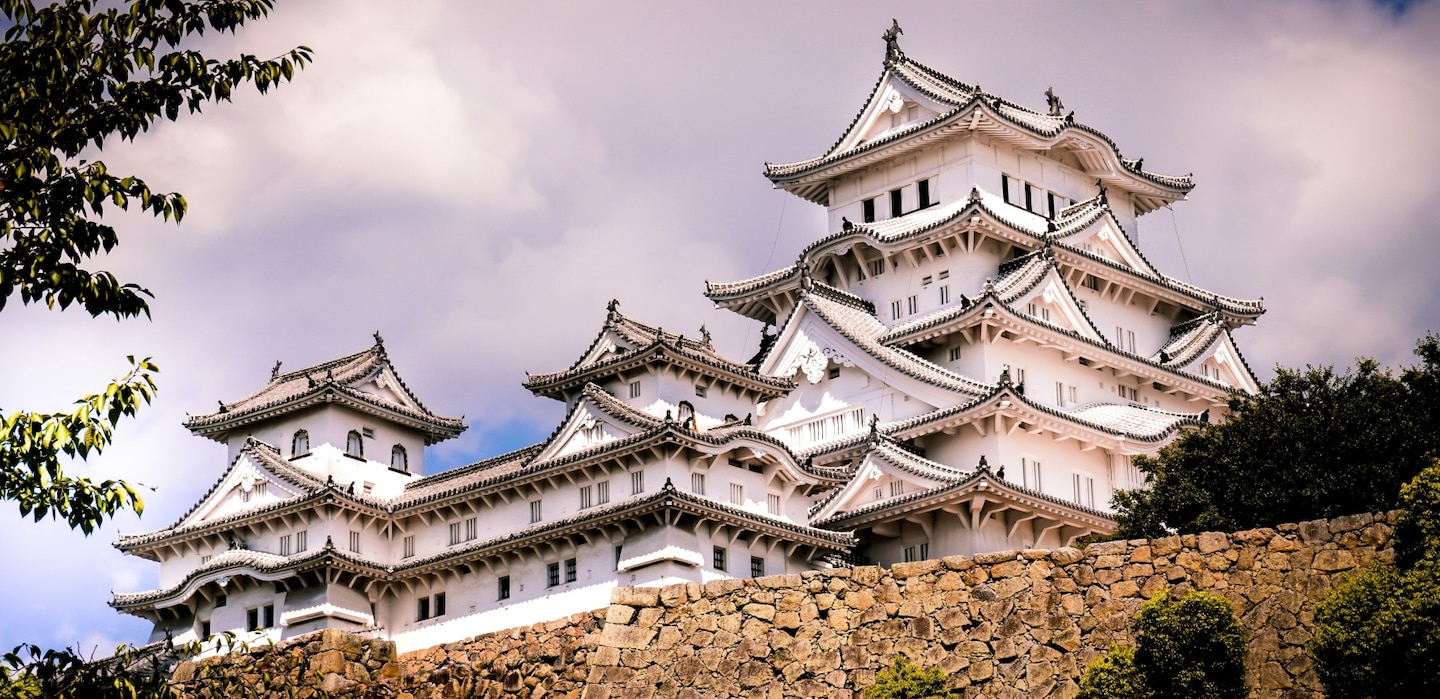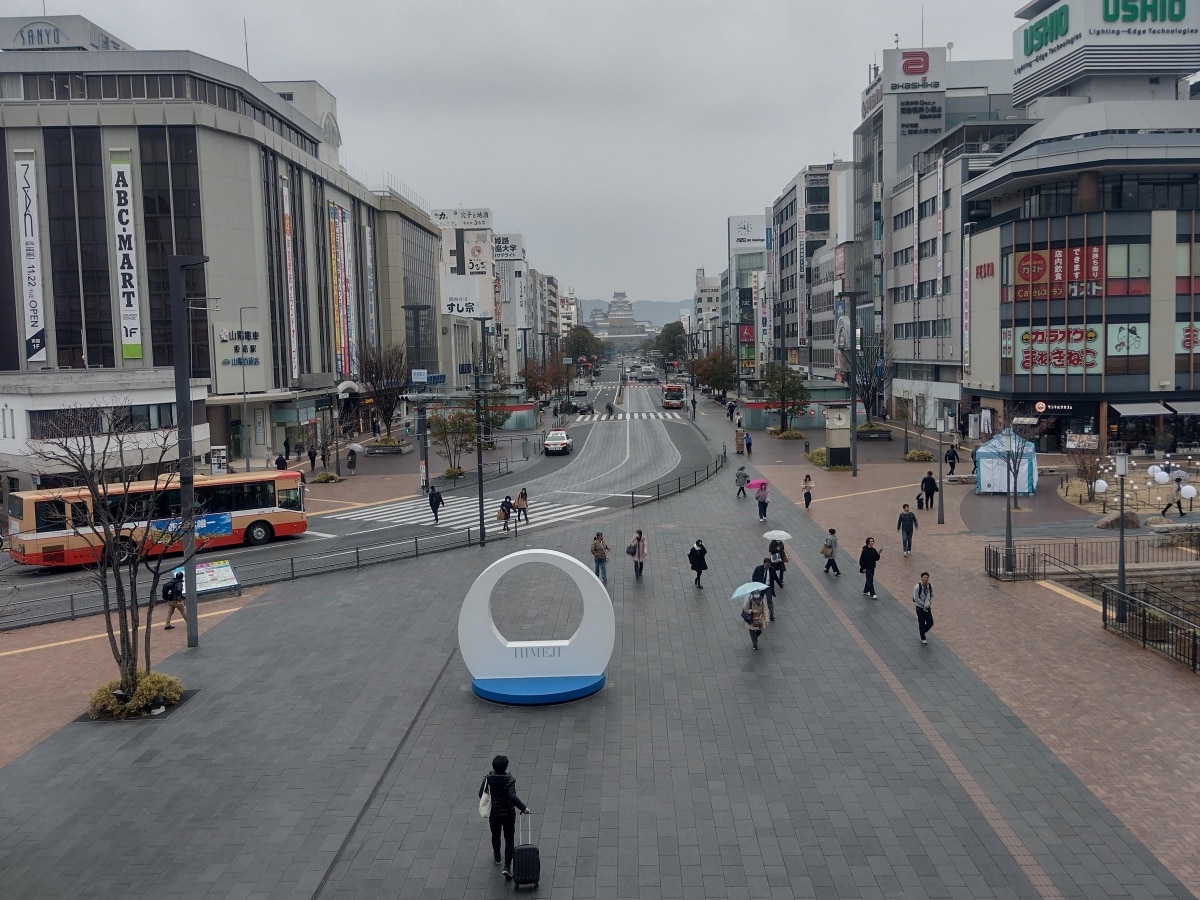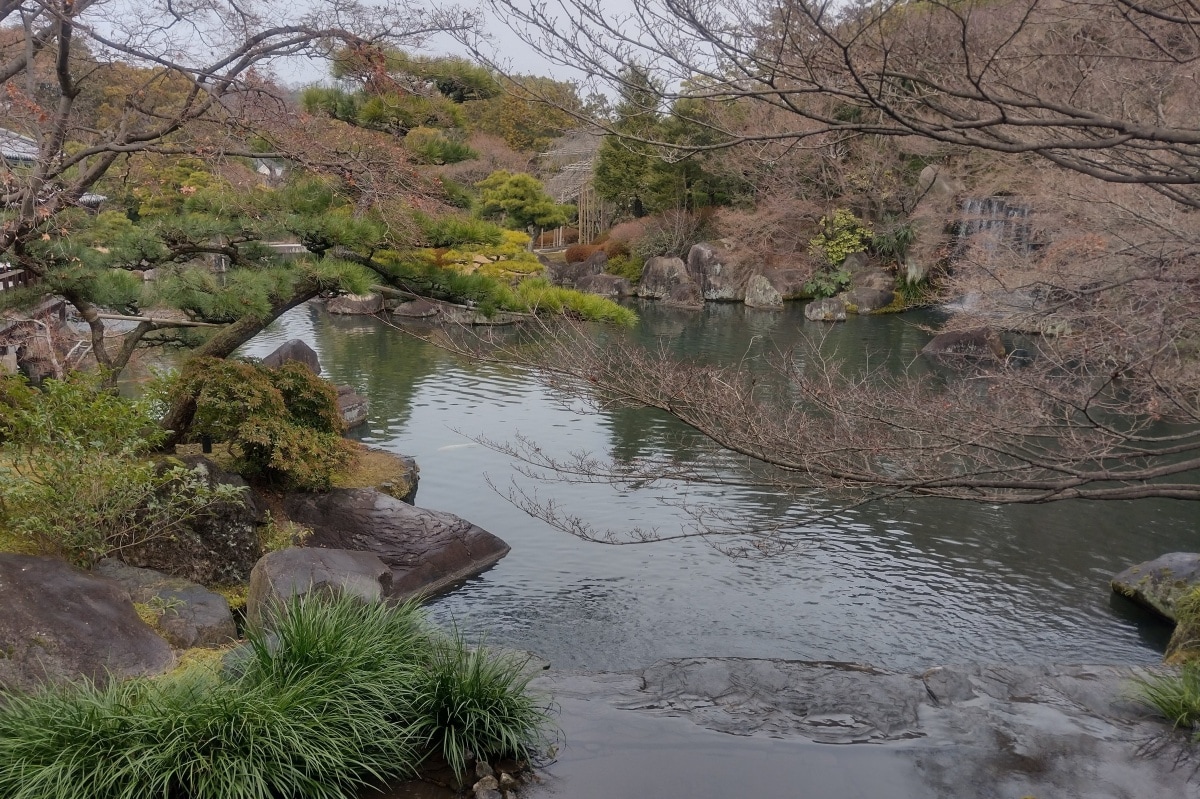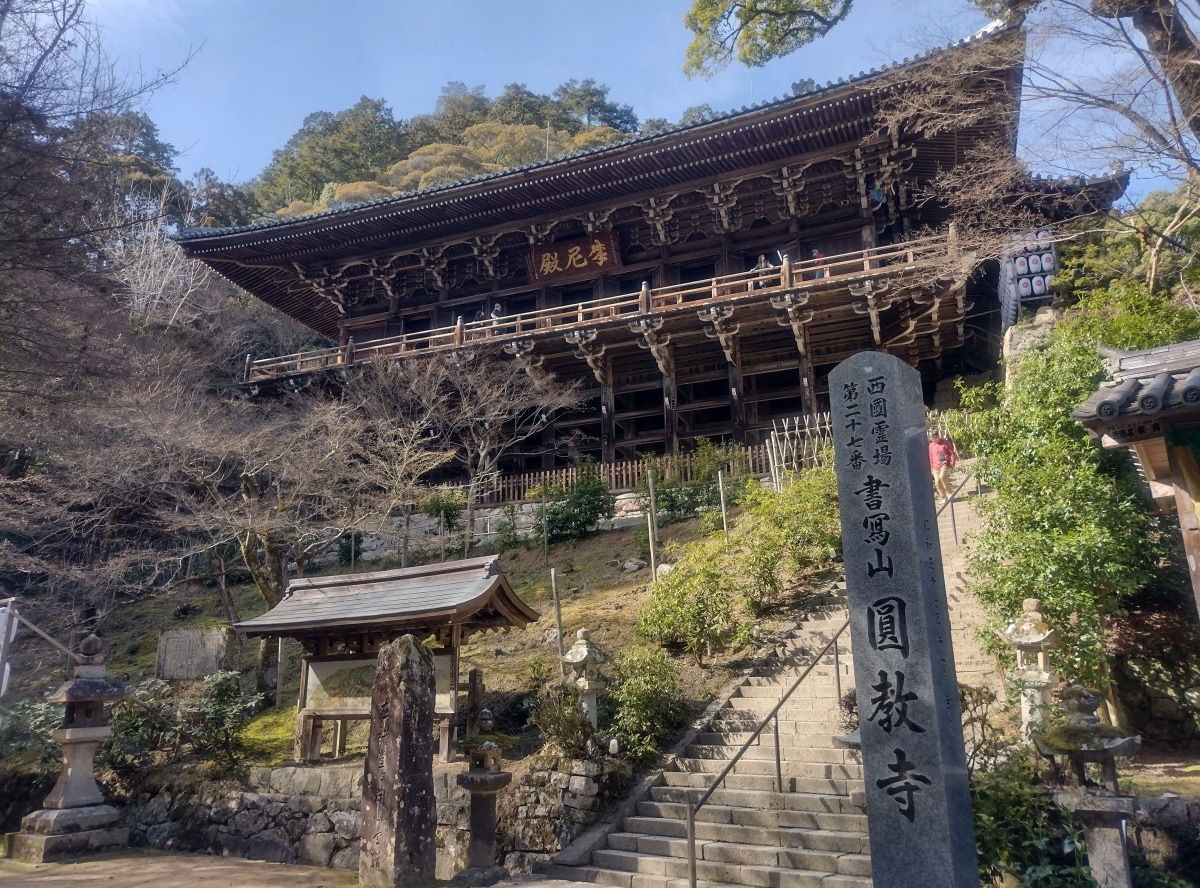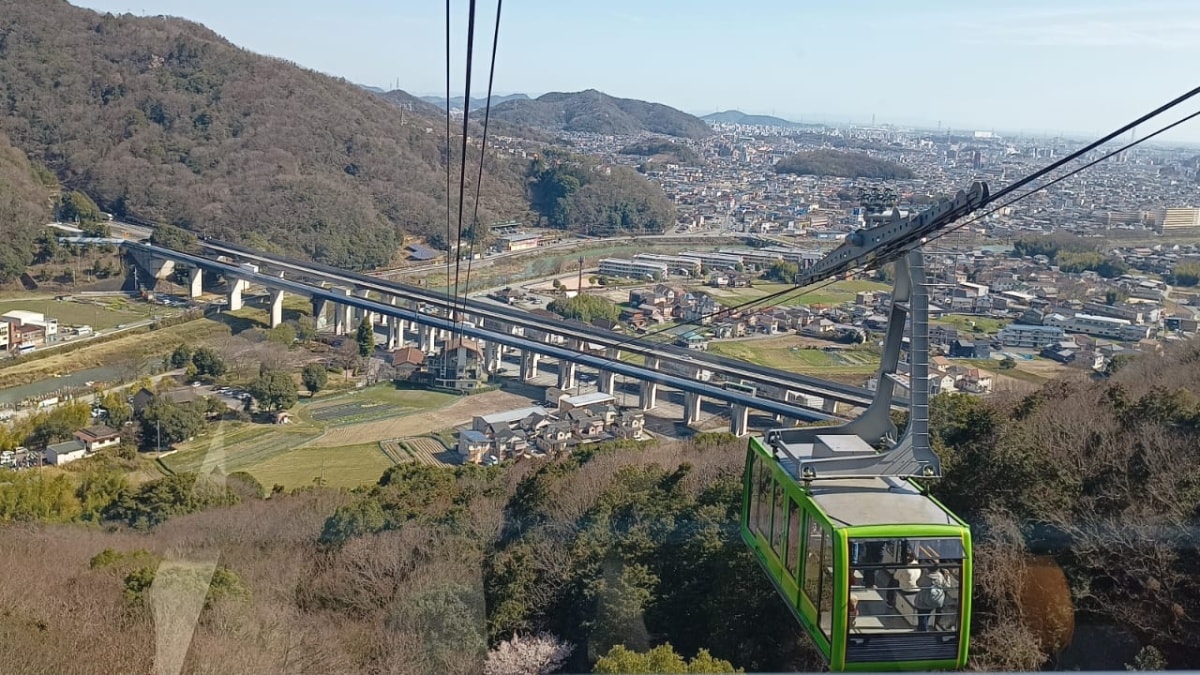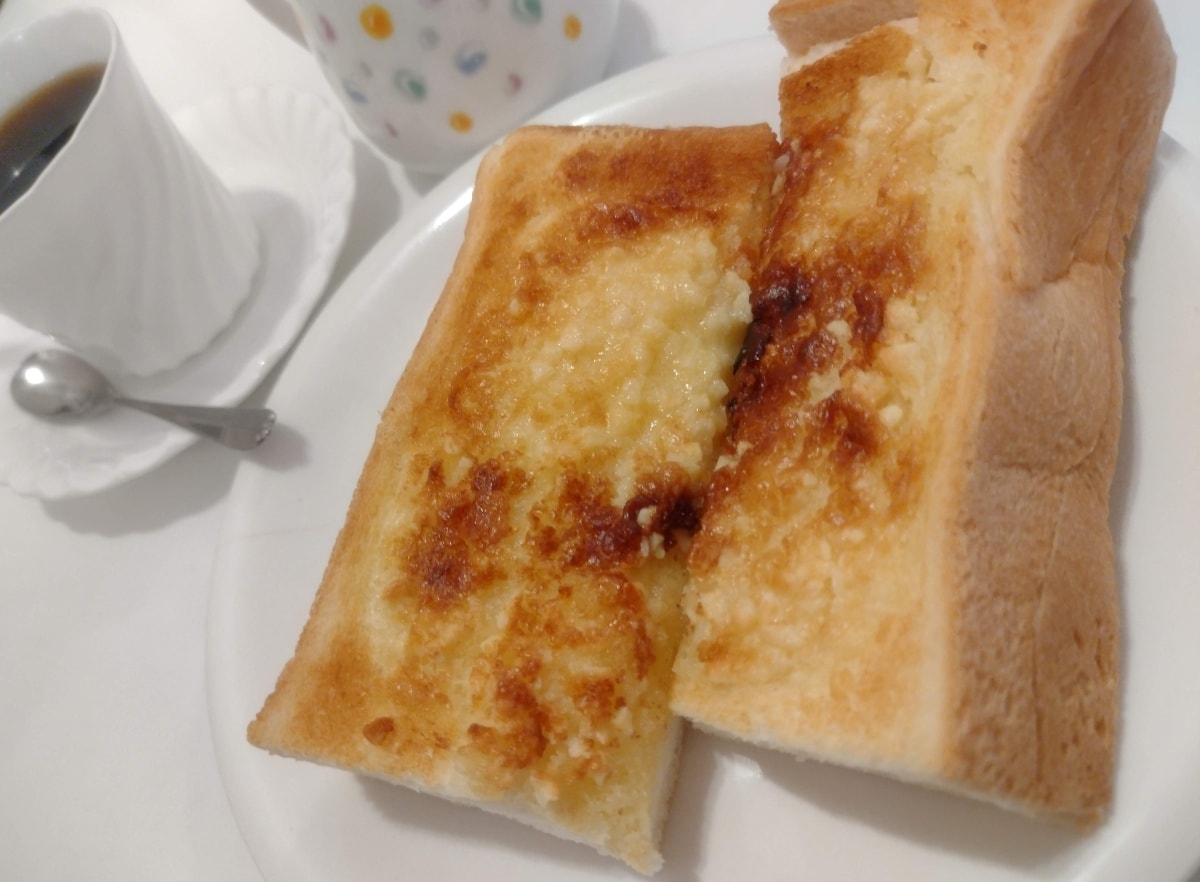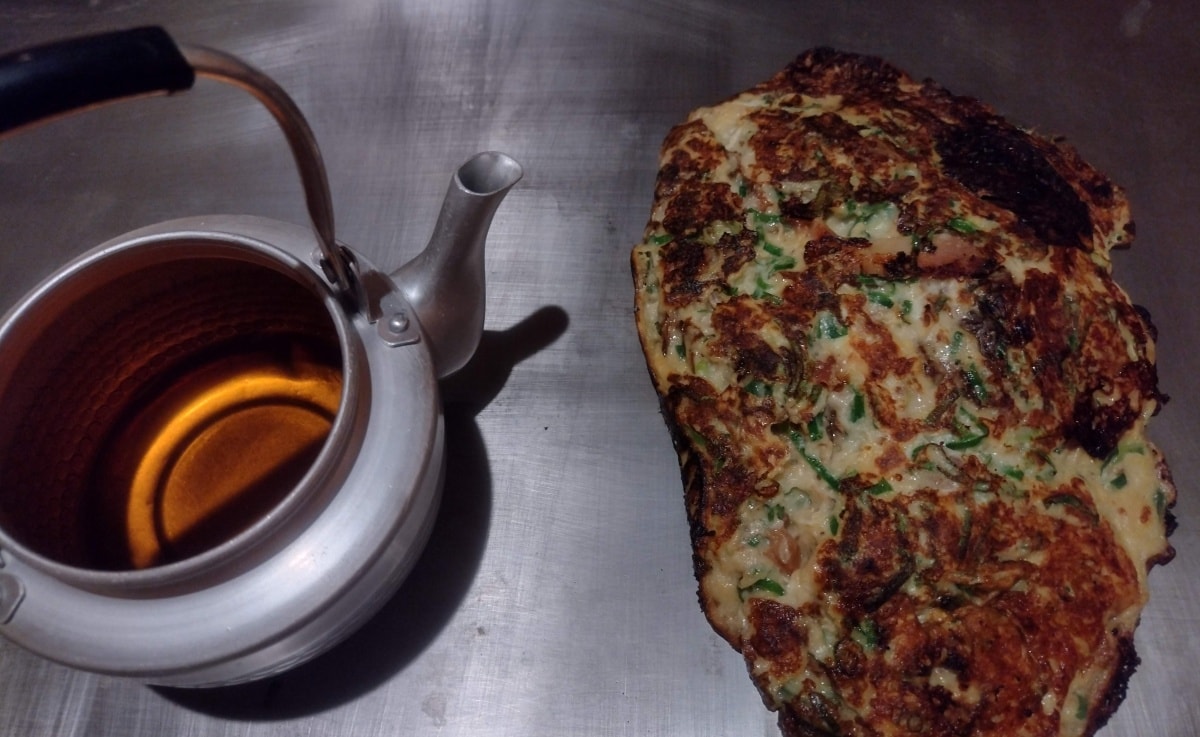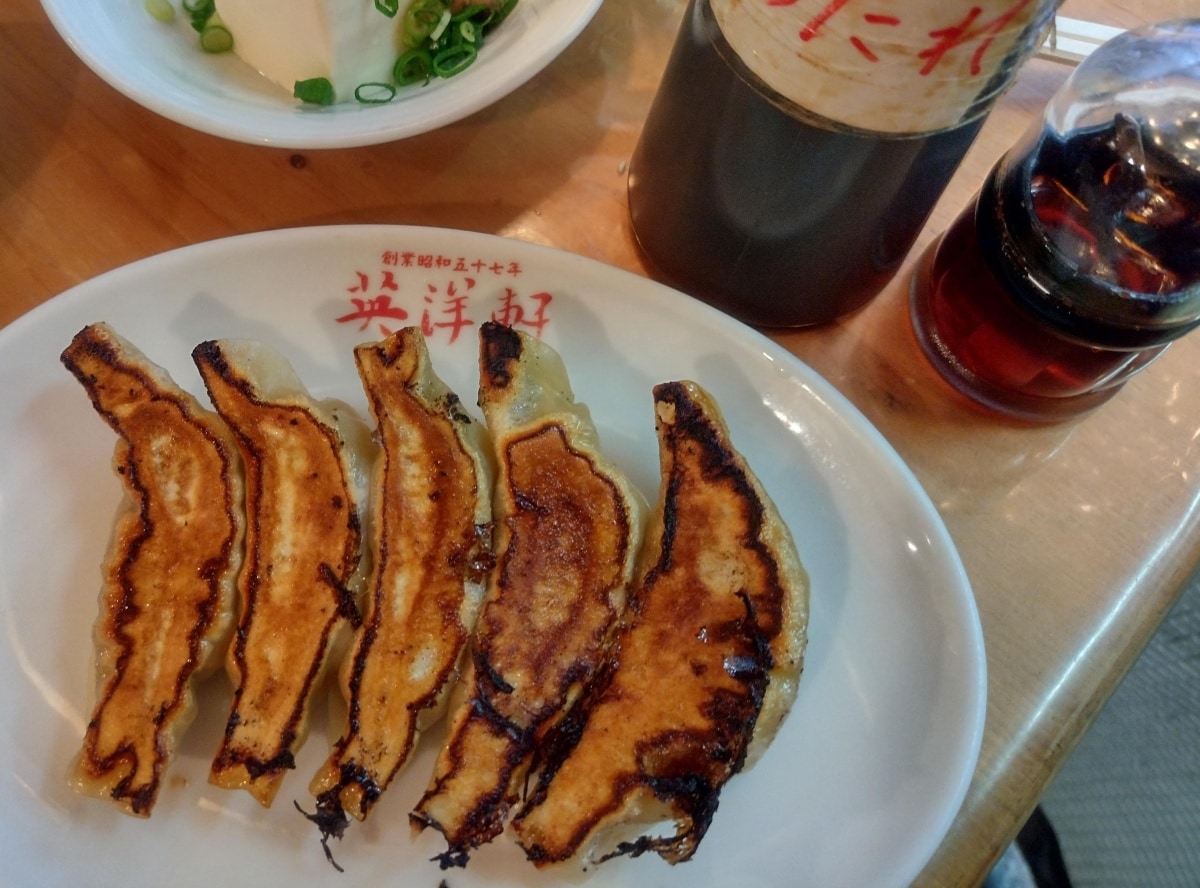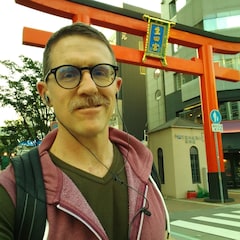The City of Himeji: More than Just a Castle
Himeji is a joka-machi (castle town), and its history makes it a great destination for longer stays. Anthony Davis shares his knowledge of this compact city, and some areas within walking distance of the center that allow visitors to enjoy old streetscapes not created for tourists.
By Anthony DavisAn Easy Day Trip from Kyoto, Osaka, or Hiroshima
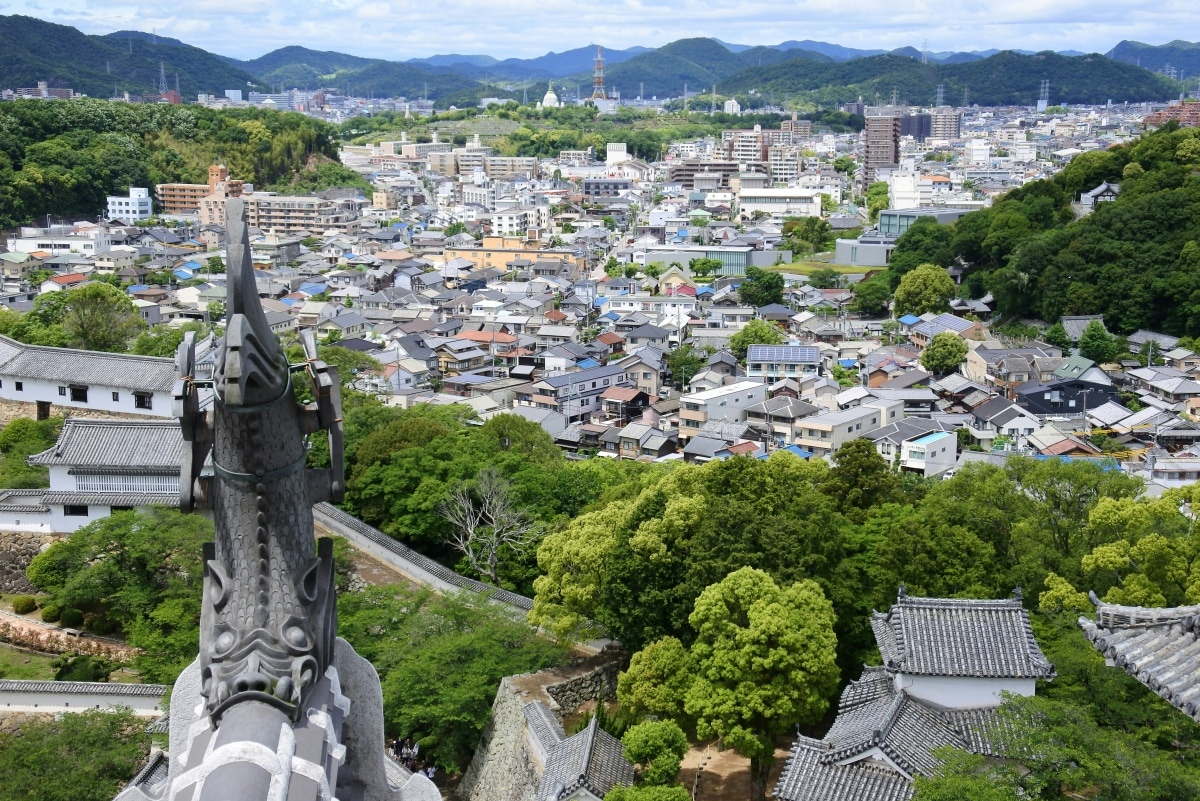
A view of the city from the castle ramparts.
My connection to Himeji reaches back to the 1980s. My hometown, Adelaide, and Himeji forged a sister-city relationship in 1982. A Japanese garden, the Himeji Garden, was created in Adelaide, and a Japanese restaurant opened named after the city. Student exchanges also began, and I first visited in 1990, staying two nights with the family of a student who studied at my high school, and visiting the castle. Since then, I’ve taken friends and family members to the castle, and recommended it as a must-see to many others. Now that I live in Kobe, I often suggest it as a day-trip. Friends have even made a half-day stopover between Hiroshima and Kansai, which is easy, as the castle is walking-distance from the station, and the shinkansen stops here three to five times an hour.
Himeji's Layout
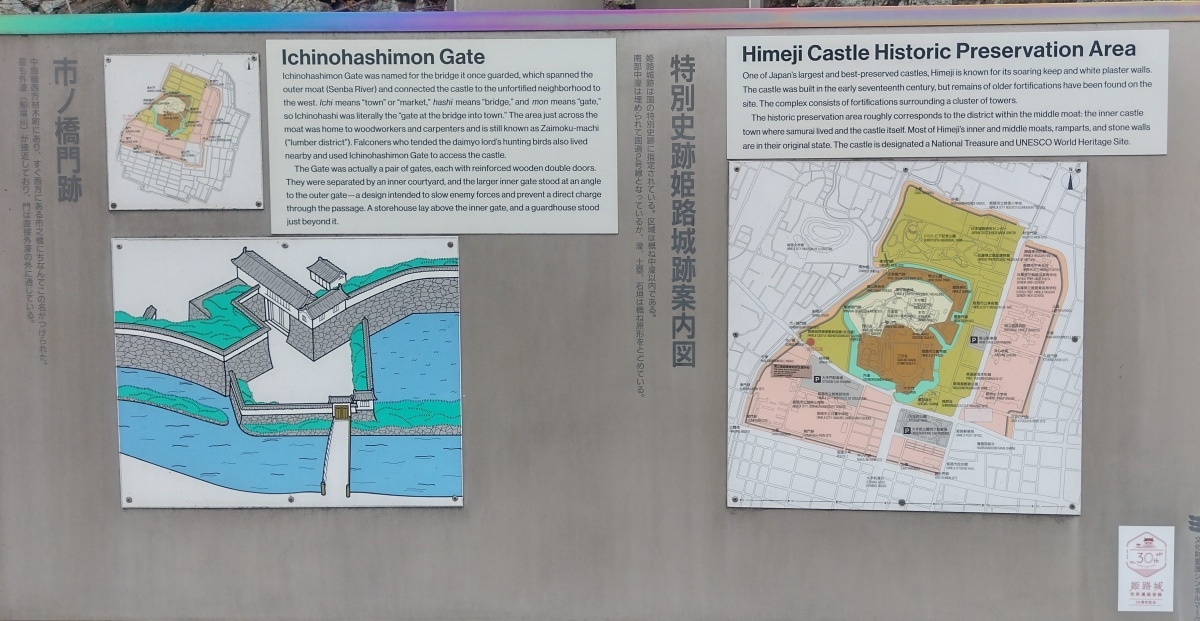
Map of the Himeji Castle Historic Preservation Area and diagram showing the location of a former gateway
A key to understanding the city is to compare historical and modern maps. The castle, built on Himeyama, one of a number of hillocks on the Harima Plain, was surrounded by three concentric moats: inner (still existing), central (parts of which remain) and outer (which has been filled in). The area between the inner and central moats was the main samurai quarters, much of which is now an open park area with tourist facilities. The art and history museums, and a zoo, are also here. The area between the central and outer moats was home to samurai and temples on its eastern and southern peripheries, but mostly to regular townsfolk and businesses. Many relics remain of the moats and mounds that protected the town, and plaques have been erected through the city marking the ancient gates. Himeji Station, 15-minutes’ walk south of the castle, sits outside of the former outer moat.
Himeji was at the intersection of the Saikoku Kaidō (the Pacific coast highway from Kyoto to the western provinces), the highway to Tajima Province on the Japan Sea Coast, and the Shikama Kaidō, the road leading to Himeji’s sea port. This knowledge provides a hint of where to hunt for interesting remnants of the city’s history.
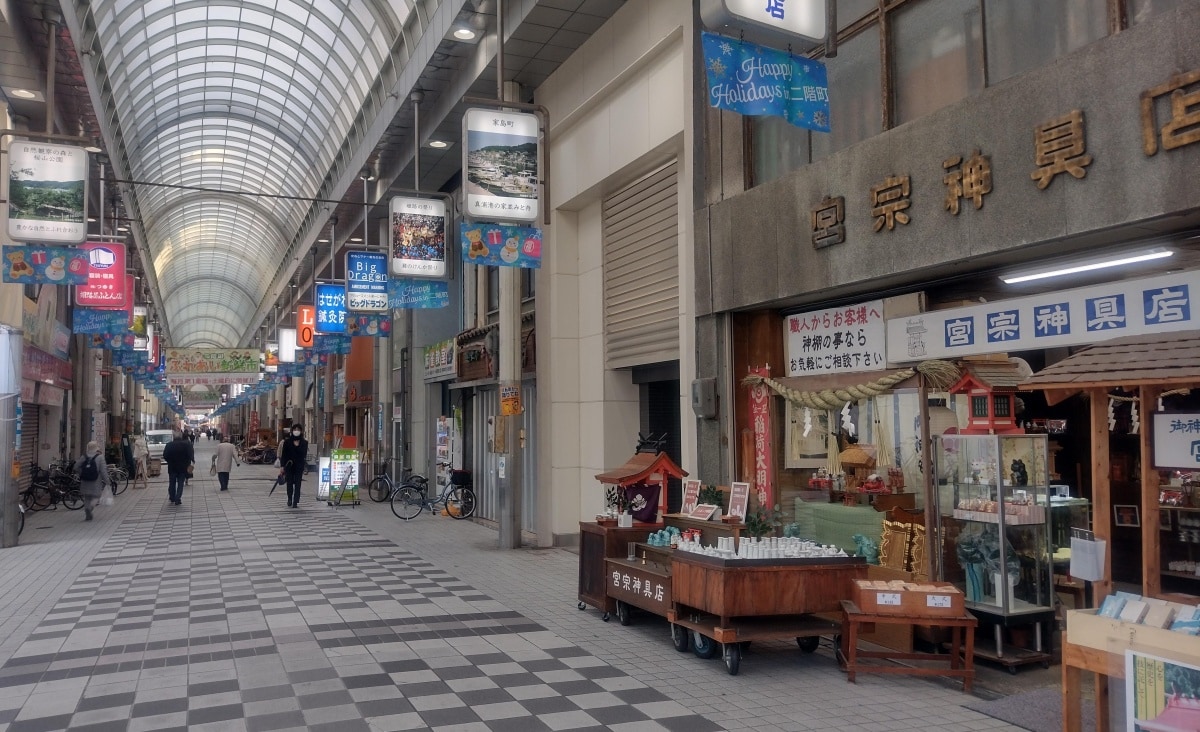
Nikaimachi, the major shopping precinct in Himeji for centuries
Sadly, Himeji was heavily bombed in June and July 1945, flattening around 60 percent of buildings in the areas east and south of the castle. Consequently, although much of the city's layout is inherited from its time as a castle town, the buildings in the shopping and business district are post-war structures. Still, there are shops here that have been in business for hundreds of years, and the shopping streets have a nostalgic Showa-era vibe. People who enjoy taking time to meander and absorb the atmosphere away from the tourists can find streetscapes in Himeji that escaped the bombing, with houses and temples dating back to the 1800s and earlier.
First Stop
Upon arrival, I highly recommend visiting the excellent Himeji City Tourist Information Center in the central concourse of JR Himeji Station. It has a large range of maps and brochures of the city and beyond, and helpful staff. To get an overall grasp of the city, visit the deck on the second floor of the station, which offers a great view northwards of Himeji Castle at the end of Otemae Street. The city itself is compact, flat and easy to walk around, and rental cycles are also available at the station.
Beyond the Castle
Koko-en Garden, immediately west of Himeji Castle, is a Japanese garden divided into nine sections, each in a different style. The garden opened in 1992, incorporating the site of the former western residence of the castle lord and numerous samurai residences. The layout matches that of the historical residences and walled streets between them, creating the atmosphere of ancient samurai quarters. The gardens are ornate and tranquil, and offer different perspectives of the castle. There is a mid-priced restaurant with expansive garden views serving noodles, beef teppanyaki, and conger eel, a Himeji delicacy. Another worthwhile experience is enjoying green tea and a traditional sweet in Souju-an tea house. There is a joint admission “combination ticket” for entry to the castle and the garden, for a discount of around 250 yen (adult), available at either facility.
Climb Every Mountain
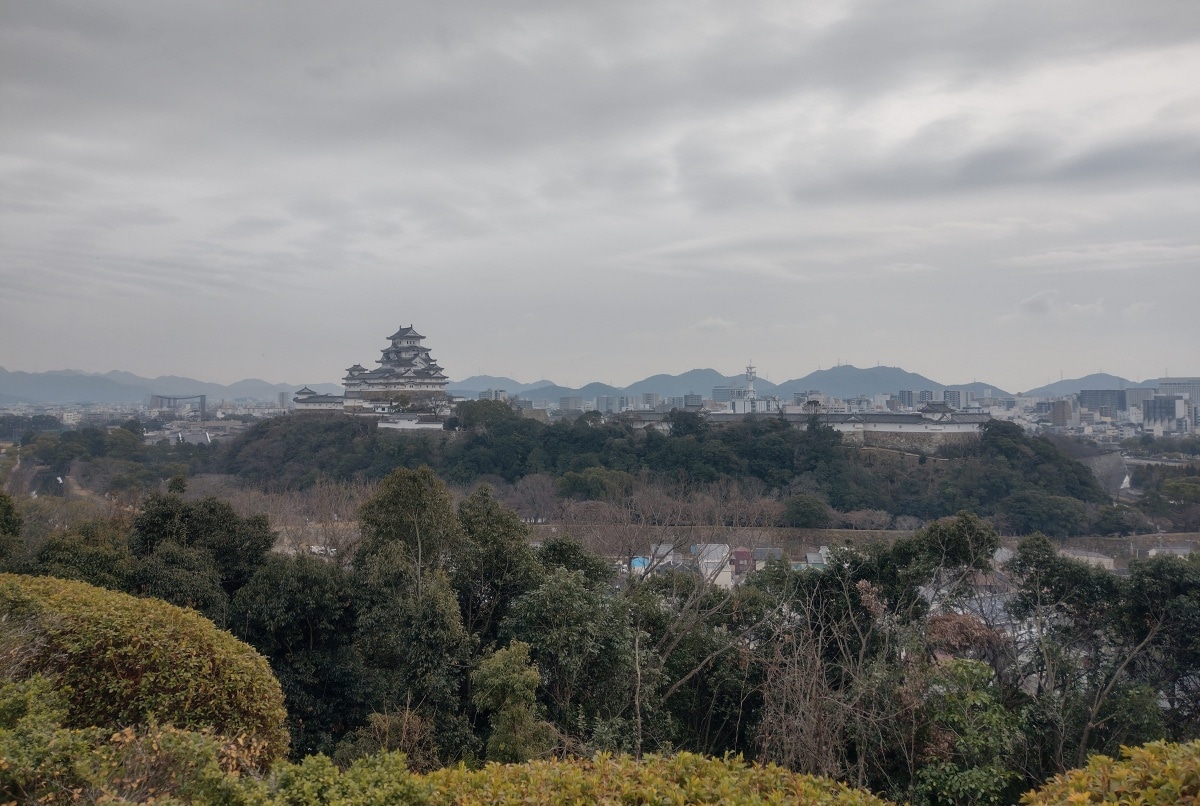
Himeji Castle seen from the top of Otokoyama
Otokoyama is a 57-meter high hill, 15 minutes northwest of the castle on foot. The hill is home to a temple and three shrines, but the main attraction is the garden outlook at the summit where you can get great photos of the castle from a unique perspective. Access is via 198 steep stairs (another stairway, on the northern ascent, is equally strenuous).
Nozato
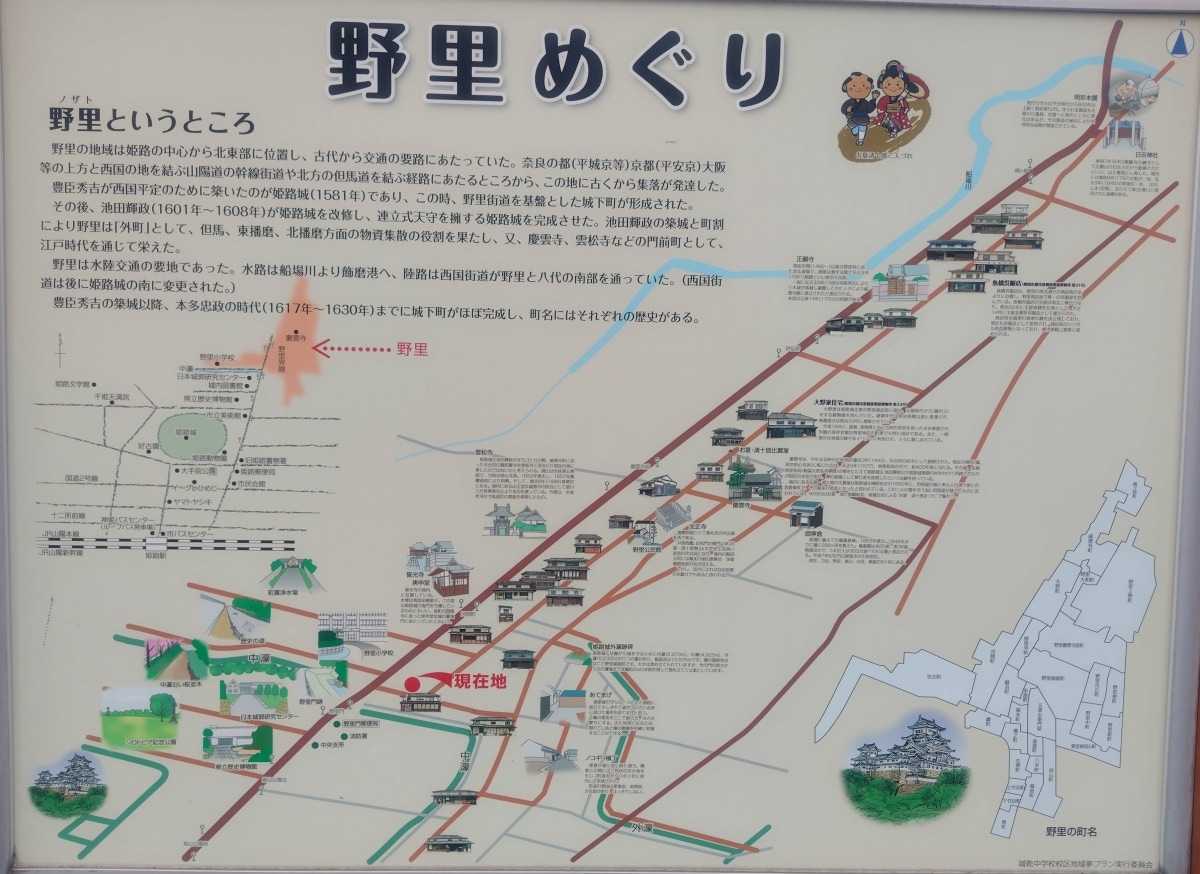
Map of Nozato historical district
Nozato was a merchant town in the Edo period, centered on the Kyu-Nozato Kaido (Old Nozato Highway), the old road heading northeast of the city towards Tajima. While it is a quiet suburb, there are around 200 old houses scattered throughout the district, making it arguably the best historical streetscape in Himeji. The local community has made efforts to rejuvenate the area, and there are cafes and restaurants as well as shops selling knickknacks aimed mostly at Japanese visitors. The tourist information office at the station can provide an all-Japanese guide map if you ask, with photos of the best examples of historical architecture numbered on the map. You could easily spend a couple of hours wandering through the area. If you pay close attention, you may find the nokogiri yokocho. Himeji is riddled with these zig-zagging “saw-blade streets” that were probably a deliberate design to slow any attempted invaders from reaching the castle.
Nozato: Townhouses, Sweets, and the World's Shortest Bridge
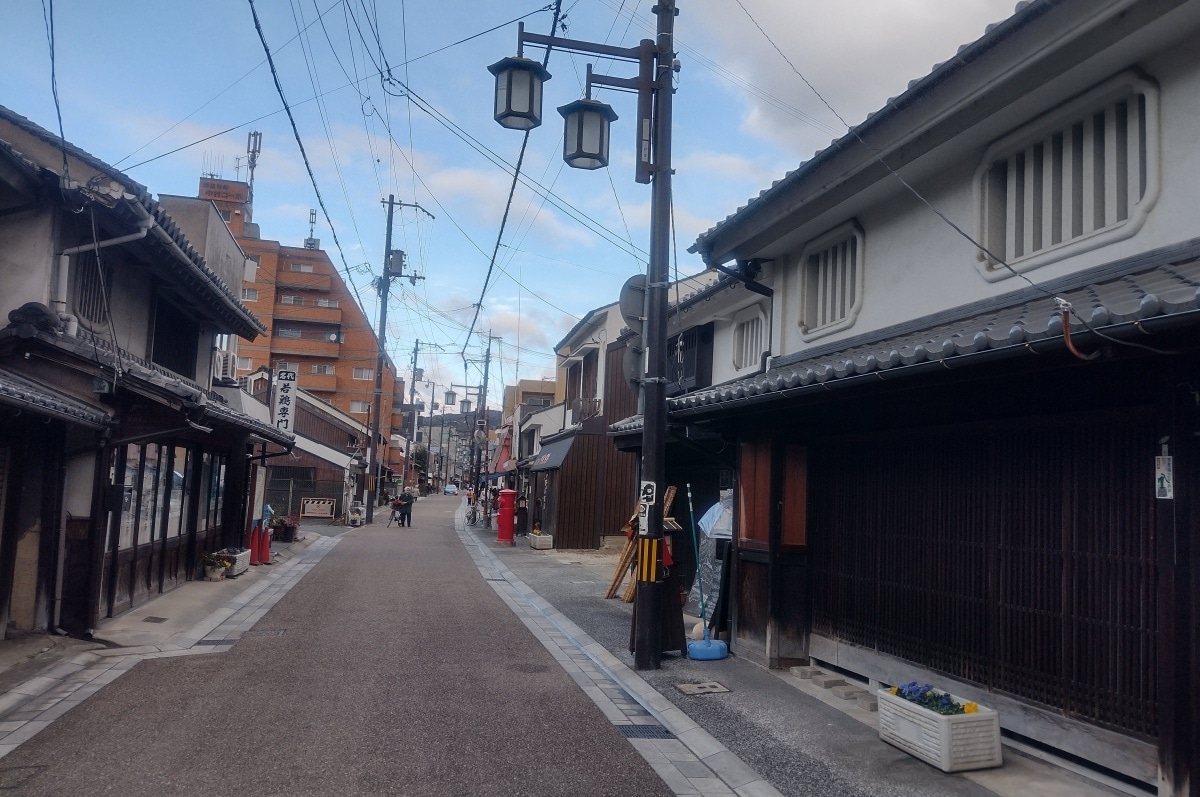
Streetscape along Kyu-Nozato Kaido (Old Nozato Highway)
Most of the machiya townhouses have a narrow street frontage of less than 10 meters, but are over 30 meters deep, with gardens and storehouses to the rear of the main house. There are also many temples and shrines in Nozato. One highlight is the award-winning 100-year-old sweets shop Matsuya, famous for azuki-bean-filled "Seijuro monaka," named for a tragic love story about the affair between Seijuro, a servant, and Onatsu, the daughter of a wealthy rice merchant. The lovers are now enshrined side-by-side at nearby Keiun-ji Temple. The shop also sells French cream puffs, and dorayaki, mini pancakes with a range of fillings.
The Josai-Senba district, immediately west of the castle town along the ancient Saigoku Kaidō, is another area with surviving machiya townhouses and streetscapes. The river here was used to ship cargo from the port to the castle. Tachibanaya is an old miso shop in one of the most well-preserved merchant houses in the area. Nearby Sakai Bridge is approximately 90 centimeters long, said to be the shortest bridge in the world.
Shoshazan Engyoji Temple
Engyoji Temple, founded in 966, is located on Mt. Shosha, a 30-minute bus trip northwest of Himeji Station. It boasts numerous historical buildings, many registered as cultural properties, cemeteries, and six sub-temples spread throughout a forested mountain. The temple has been an important pilgrimage destination for centuries, and in recent years, the site for filming Japanese drama series as well as The Last Samurai, starring Tom Cruise.
Ascending Mt. Shoshazan
Traditionally, visitors had to climb Mt. Shosha via one of its hiking trails (40-50 minutes), but there is now a ropeway that makes access to the temple much easier: a four-minute scenic ride, departing every 15 minutes. (A combined bus-ropeway ticket is available at Himeji Station. Himeji city buses also accept Suica and other IC travel cards).
Getting to the Temple
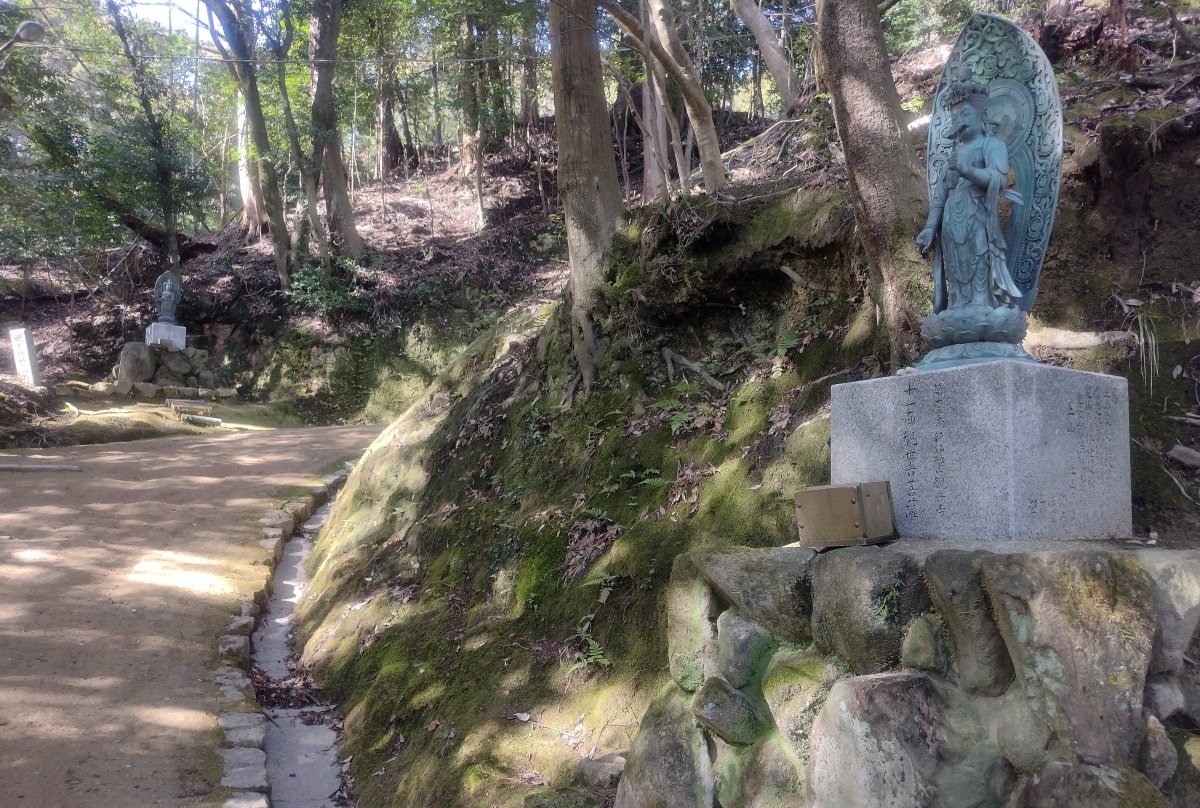
Path from the ropeway to the temple
From the gate entrance at the top of the ropeway, visitors can choose to pay for a shuttle bus to the stunning main hall, Maniden, or simply pay for entrance to the temple precinct. I strongly recommend taking the 20-minute hike from the ropeway station to Maniden to absorb the forest atmosphere on the approach to the temple.
Practice Sutra Copying or Spend a Day on Zen Meditation
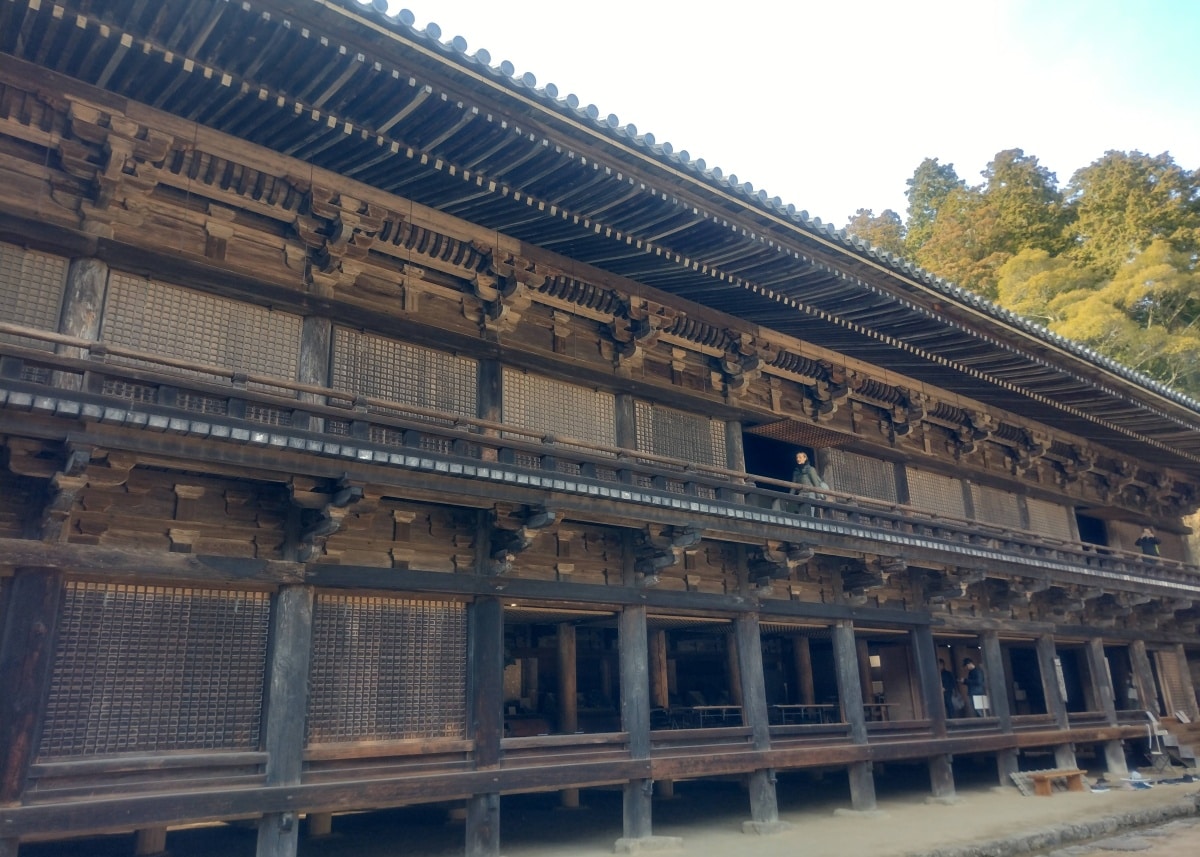
As seen in "The Last Samurai"
The mountain temple is now on the tourist trail, but the forest still feels secluded and inspiring. It is possible to practice shakyo (sutra copying). Once a month, a full-day Zen experience is offered that includes zazen meditation and shakyo. There is a restaurant open in the warmer months serving Buddhist cuisine, shojin ryori, but advanced reservations for a minimum of five guests is required. A more convenient option is the Hazuki-chaya, a simple eatery close to the bus stop that serves soba and udon noodles.
Shoshazan has terrific views of Himeji and further out to the Seto Inland Sea and Awaji Island. The mountain and temple grounds require a fair amount of hill climbing and at least two hours to do it justice.
Downtown Himeji
The shopping district between the station and castle is a retro paradise just waiting to be explored. The main shopping street, Nikaicho, is on the east-west axis that was the ancient Saikoku Kaido. The main arcade along with the side streets and alleys have a plethora of shops, cafes and izakaya bars. There is a sign indicating the old southern gate, and long-established businesses also have historic plaques. Nikaicho has two Japanese sweets shops: Kineya, over 100 years old, and Iseya, dating back to 1702.
Himeji's Famous Dishes
Nearby are branches of Himeji icon, Nanpuu. This popular okonomiyaki (savory pancake) restaurant invented Himeji-style doroyaki, which is okonomiyaki served with dipping broth. Almond toast is another Himeji delicacy, though it tends to be a morning accompaniment to coffee. Oden is also well-known: a stewed dish where you can choose your own ingredients, such as fishcakes, eggs, and daikon radish.
Foodie paradise
On one of the backstreets is my favorite semi-outdoor standing bar, Eiyoken (Japanese menu only), which specializes in gyoza, the dumplings also known as pot stickers. Lastly, tucked away in a shopping arcade just alongside the station is Kokoromi, a modern standing-only sake bar with around 400 varieties of sake from throughout Hyogo Prefecture to taste.
Eiyoken
301 Ekimaecho, Himeji, Hyogo
Phone: 079-288-3055
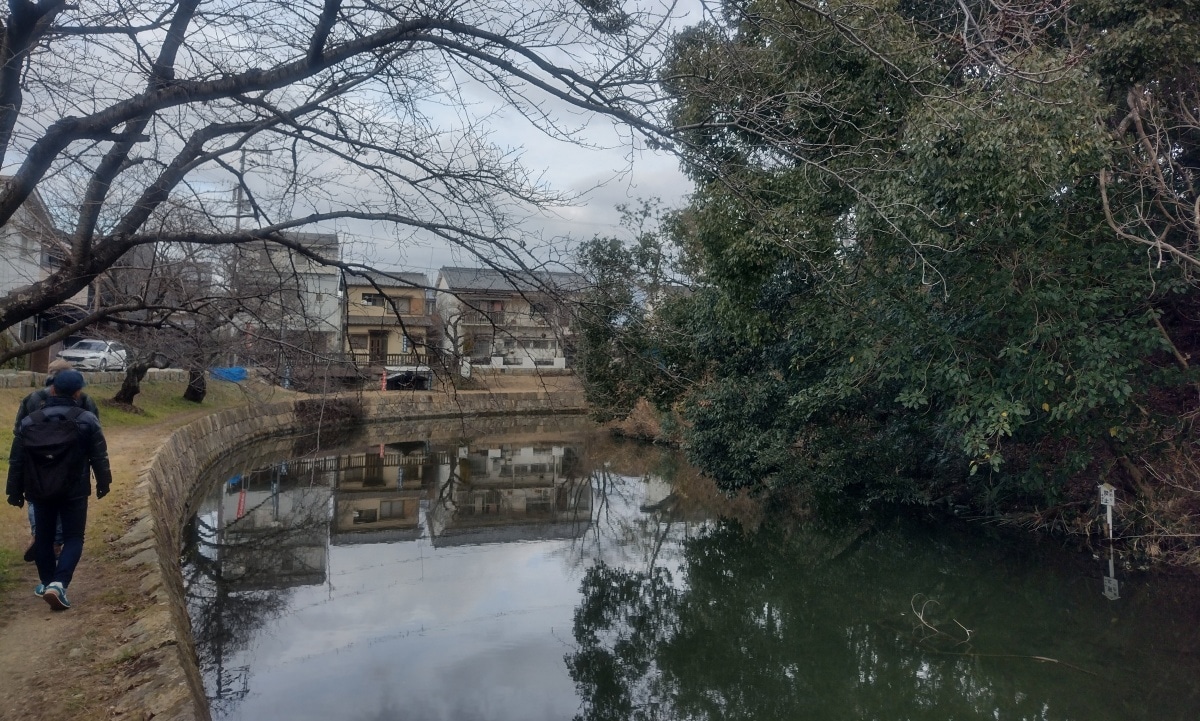
Being shown around the moat backwaters by a friendly local
Essentially, Himeji is a mid-sized city with more to explore than might first appear. Locals are friendly, and a little bit of effort will reward you with an experience of Japan that can be quirky, less-touristed, but also very insightful. You won’t be disappointed, and I will be back very soon.
Himeji is about 50 minutes from Kyoto, and 1 hour from Osaka on the Shinkansen. It is 55 minutes from Hiroshima, and 2 hours from Fukuoka (Hakata), also on the Shinkansen.


